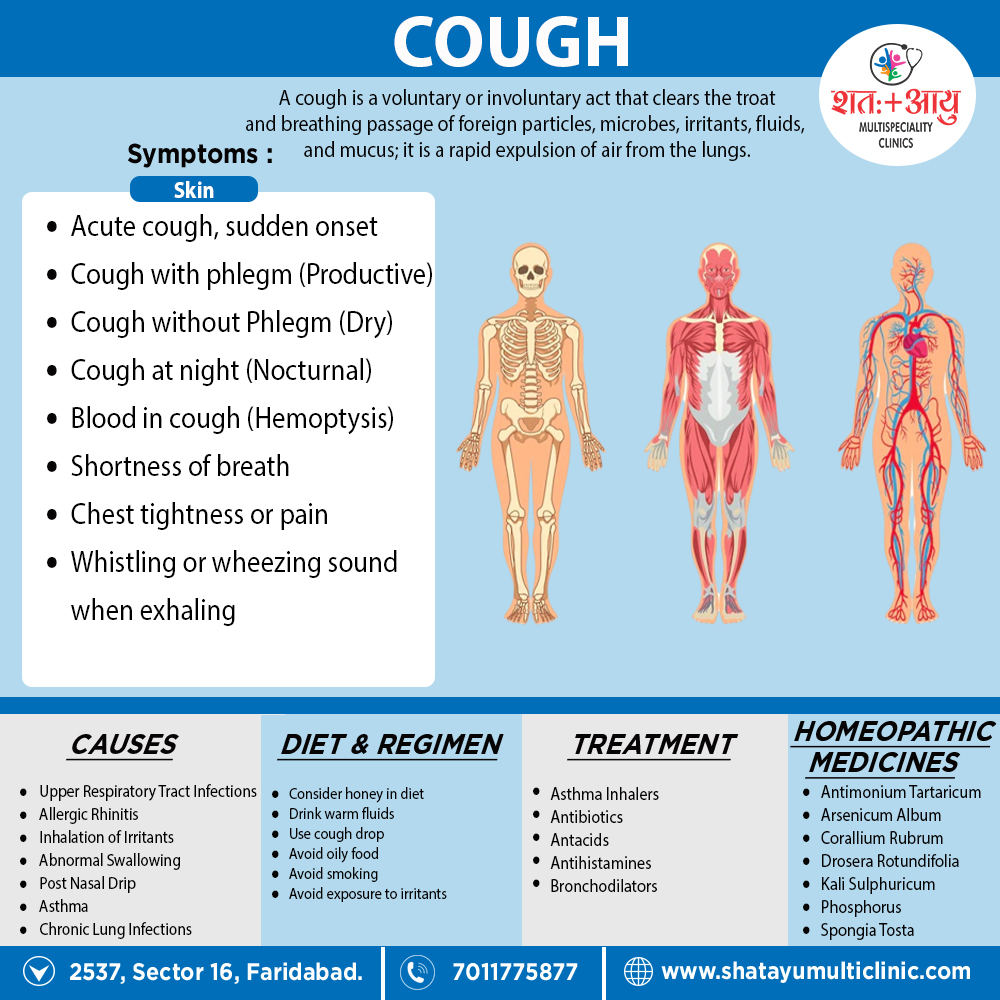Classification of Cough
Dry or unproductive: Upper respiratory tract infection, early stage of pulmonary tuberculosis, bronchogenic carcinoma, smoker’s cough, interstitial fibrosis, bronchial asthma, tropical eosinophilia, pulmonary infarction, etc., Psychogenic or habitual cough.
Wet or productive: Bronchiectasis, lung abscess, fungal infections.
Paroxysmal: Bronchial asthma, cardiac failure, whooping cough.
With wheezing: Bronchial asthma, tropical eosinophilia, chronic bronchitis.
Barking: Harsh, loud, ‘seal-like’ cough, paroxysmal or occasional, in hysteria (functional) disturbing to the hearer, but perhaps not to the patient himself or herself.
Nocturnal in asthma, pulmonary Oedema, post-nasal drip in chronic sinusitis, reflux esophagitis.
Bovine :(Brassy or gander, or leopard’s growl) – due to laryngeal paralysis from involvement of recurrent laryngeal nerve e.g. in aortic aneurysm.
Staccato: In whooping cough there is paroxysmal cough ending in a whoop.
Croupy: Harsh, hoarse cough in laryngeal infection.
Hacking: Short, dry, irritable cough frequently repeated in congestive conditions of pharynx, upper air passages, and smoker’s cough.
Suppressed and painful: In pleurisy cough is suppressed because chest pain is aggravated by coughing (and deep breathing).
Toneless, whispering, aphonic cough: In destructive lesions of vocal cords, e.g., tuberculous ulcer or neoplasm.
Spluttering in trachea: Esophageal fistula.
Cough related to exertion: In early LV failure and mitral stenosis.
Cough related to meals: Suggests hiatal hernia, tracheoesophageal fistula, or esophageal diverticula.
Early morning cough with expectoration in bronchiectasis and pulmonary TB.
Nocturnal cough: LV failure, bronchial asthma, chronic bronchitis, aspiration, post-nasal drip, GERD, esophageal obstruction, ACE inhibitors.
Recent worsening in case of chronic cough is a common presenting symptom of bronchial carcinoma.[1]

